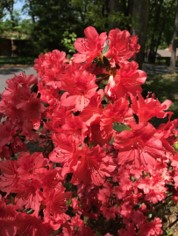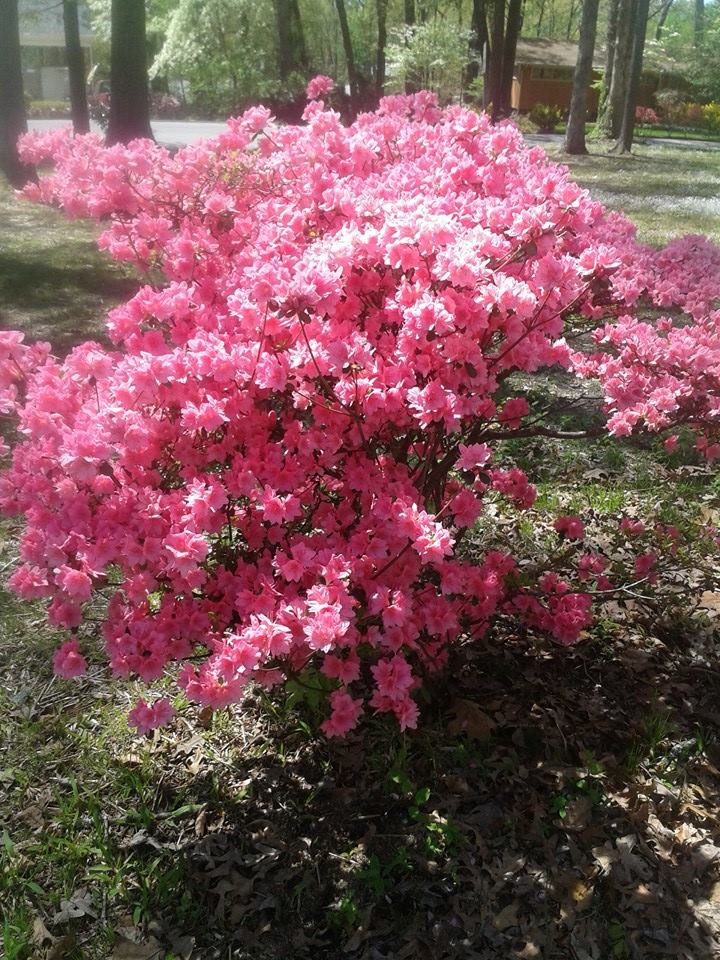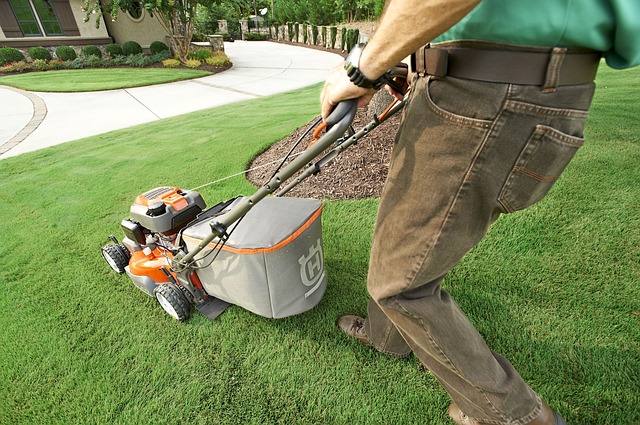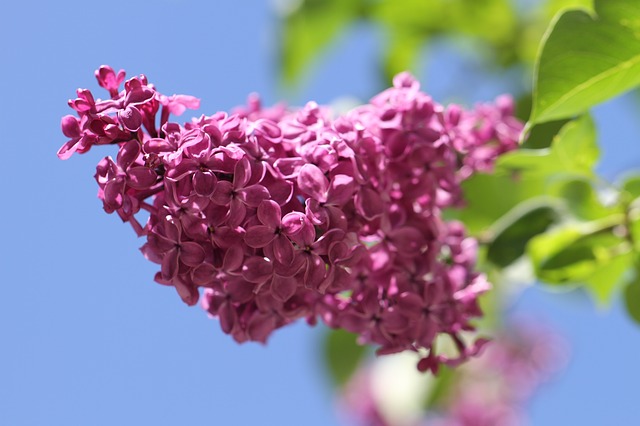Healthy Azaleas
/in Garden and Landscaping /by Sherri The DCI family’s yard is heavily wooded with trees which doesn’t leave much luck for grass or anything else requiring a lot of sunlight, (see James’ humorous post here regarding this struggle) but it does lend itself to some really pretty azaleas. We have several that every spring provide us with the most beautiful display of pinks, coral, and white. They are relatively easy to care for if you are strategic in the kind you pick, you can enjoy their beauty in waves. Some of ours bloom early and others a just a little later giving us extra time to enjoy the show. And … don’t give up on them if, in the fall they are looking a little spindly and it appears their best days are gone.
The DCI family’s yard is heavily wooded with trees which doesn’t leave much luck for grass or anything else requiring a lot of sunlight, (see James’ humorous post here regarding this struggle) but it does lend itself to some really pretty azaleas. We have several that every spring provide us with the most beautiful display of pinks, coral, and white. They are relatively easy to care for if you are strategic in the kind you pick, you can enjoy their beauty in waves. Some of ours bloom early and others a just a little later giving us extra time to enjoy the show. And … don’t give up on them if, in the fall they are looking a little spindly and it appears their best days are gone. This pink one looked just like that but James resisted the thought to cut it down. Instead he mulched it well and let it go. By spring that year, it gave us this beautiful show and continues to do so each year since. If you missed it earlier, Tom Thompson of Natural Art Landscaping wrote a great post for us on spring yard and garden maintenance. Check it out here.
This pink one looked just like that but James resisted the thought to cut it down. Instead he mulched it well and let it go. By spring that year, it gave us this beautiful show and continues to do so each year since. If you missed it earlier, Tom Thompson of Natural Art Landscaping wrote a great post for us on spring yard and garden maintenance. Check it out here.
Here’s some tips provided by The Old Farmer’s Almanac for growing healthy azaleas:
The best time to plant azaleas is in late spring or early fall. Evergreen azaleas do well in partial shade with some wind protection. Deciduous varieties flower more profusely in full sun.
- Provide well-drained, humus-rich soil that is slightly acidic (pH 4.5–6).
- Mulch well. Shallow-rooted, azaleas tend to dry out quickly if not mulched. A mulch of oak leaf mold, pine needles, or aged oak, pine, or hemlock sawdust will keep soil acidic and moist.
- Fertilizer isn’t needed. The decaying mulch will provide all of the nutrients that azaleas need.
- Seldom bothered by insects and diseases, azaleas require little care once established, except for watering during dry times.
If you are someone who likes a resource in hand, try Azaleas, Rhododendrons and Camellias 2nd Edition by Sunset Books. We have camellias in our yard as well and they provide beautiful blooms during the depth of winter. Ours are planted just outside our kitchen and dining rooms windows and what a display of color in the grey of winter we enjoy!
Have you had great success with your “Queen of Spring” or any other garden beauties? Let us know in the comments! We’d love to hear and learn from you too!
The links to external sites in this post are affiliate links, and we will be compensated when you make a purchase by clicking through our links.
The Lighter Side of Lawncare
/in Garden and Landscaping /by SherriSpring is one of my four favorite seasons of the year. I really enjoy seeing the renewal of plant life at this time. It is like a re-birth of the earth. I like to see the multi-colored flowers in full bloom and the rapid growth of the green stuff that simulates grass in my yard. You see, I don’t actually have much grass in the technical sense of the word…but at least what I do have is sort of green (or yellowish green actually) … and it is pleasing to the eye to behold. Well, at least it is more pleasing to look at than the various shades of brown and gray that this present growth replaced.  Eventually, as the season progresses, I will have to start mowing it like real grass, which may sound like a bad thing. But there are some upsides to having a “lawn” like mine. Allow me to explain.
Eventually, as the season progresses, I will have to start mowing it like real grass, which may sound like a bad thing. But there are some upsides to having a “lawn” like mine. Allow me to explain.
First, the stuff in my yard doesn’t grow very fast, or much at all actually. That means I don’t have to mow very often. I’ve had whole seasons where I only had to mow my yard once or twice! Think about the savings that could amount too! I don’t need a large expensive lawnmower. I don’t have to maintain that behemoth or make a place to store it. I save on gas, oil and repairs. Most importantly, I’m not a slave to my yard 2 hours a week, 20 weeks a year. Why would I want to do that? To impress my neighbors who I don’t even know much less like? Think about it. Also, the saving in time alone is quite substantial. Let’s be honest, as we age, we start getting a little more careful about how we spend our time. The reason for that is that we know there is only a limited amount left. Shouldn’t we make the best use of our time? Do we want to push a lawnmower for 2 hours every Saturday in the heat of Summer…or do almost anything else instead?
How many tombstones have you ever seen that read:
Bill Artemis Edging
1950-2019
Loving Husband and Father
Prettiest lawn in his neighborhood
Don’t get me wrong, honestly, I admire the appearance of that Irish green lawn that so many of my neighbors aspire to and achieve. It looks good. It looks really good. It is just not worth the trouble. To me anyway.
In my defense, I have tried. Really. Not just saying that. Not that you could tell. I have seeded my yard numerous times with expensive drought resistant, shade tolerant, fertilizer infused, premium hybrid grass seed. You would think it was gold infused based on what they charge for it. I have probably spent a thousand dollars on grass seed and fertilizer alone in the last 8 years. One Spring a few years back, I even rented a commercial rotor tiller and churned up the entire ½ acre that comprises my lot. I tenderly seeded it. I carefully fertilized it. I got the nicest stand of Kelly-green grass too. I took pictures and everything. Then the drought hit and every bit died. I mean every blade. So, I had to ask myself in retrospect, was it worth it? Of course, the answer was…nope, not in the least. That was a total waste of my time….and at my age that’s no longer funny.
Sometimes we have to prioritize. What’s most important? What’s the best use of my time? There was a time when I worried a lot more about what other people thought. It was an affliction of sorts that I think most of us share. I’m not as afflicted with it as I used to be. I think that is a normal part of the aging process too. 
All joking aside, I will probably go against my better judgement and waste some more time this year as is my habit every Spring (“hope Springs eternal”). I will go through the motions of buying the magic grass seed and the premium fertilizer and then sow the seed and spread the fertilizer. I will watch tender grass shoots come up and fuss at the kids to stay off of them (like it is really going to matter) and I will be tantalized with the promise of hope that this will be my year. Perhaps this year will be the year when I attain critical mass and a real lawn takes over…. Perhaps…
Getting Ready for Spring!
/in Garden and Landscaping /by SherriSpring is just around the corner and now is the perfect time to start planning for the outdoor extension of your home! Tom Thompson owner of Natural Art Landscaping and trusted partner of DCI offers his advice to homeowners on how to plan for springtime and enhance your outdoor living space. Read on as Tom answers a few of our questions!

What maintenance and new planting is best in the spring?
If you didn’t cut your perennials back in the fall, cut them back now. Mulch is best applied in the fall, but you can do it now too. It is still too early for planting annuals. Generally, you should wait until the last frost. I just wait until my local garden center starts selling them; they won’t offer them if they’re not pretty sure they won’t get killed by frost. You can plant trees and shrubs any time. Just remember that they’ll need supplemental water during the hot months. If you want to plant grass seed, you’re wasting your time. It will never develop enough root to live through summer. You can lay sod if you want, just not seed. Prune trees for shape and safety while you can still see the limb structure. Prune evergreen shrubs for size and shape (leave your azaleas alone until after they have bloomed!) and deciduous shrubs pretty much whenever you need to.
How should a homeowner prioritize spring maintenance?

- Prune now – you’re almost too late for Crapemyrtle and you’re getting close for English boxwood (English box only produces one flush of new growth a year so you need to prune it before that growth starts).
- Clean up any dead leaf litter after pruning and before mulching – gets rid of any pathogens or beasties that might want to attack your plants. Hopefully you put down an organic fertilizer (think Espoma!) in the fall but you can do that now. Mulch. Wait. Enjoy!
- Don’t fertilize your lawn. That should have been done last fall along with aerating and over seeding. If you feel the need to pull the spreader out, then get a soil test and spread some lime.
When should I scrap a plant and start over?

Is the plant performing? Do you like it? Did it out grow its space? Is it healthy? Does it have any sentimental value? If a plant is planted in the wrong spot, it’s a weed, no matter what it is. The question then is, if you like it, is it too big to move, and even if it can be moved, is that practical, based on how much transplanting it will cost? Best advice is to call someone to take a look at it to see if it’s worth saving. In my experience, I’ll recommend trying to transplant a healthy plant to a better location only if there is a reasonable chance of its surviving the shock of being moved. Removal and replacement with a new plant is a whole lot cheaper than paying labor to transplant something that ends up dying. If the plant has sentimental value, that changes everything. If Grandma’s lilac is in the way of the new wing of the house that you’re having built, then you have to try and save it – if you liked Grandma. ALWAYS take cuttings when attempting this. Better to have some rooted cuttings alive and ready to be planted, just in case the lilac dies! That is one doghouse in which I do not want to reside!
What if I don’t have room for landscaping/gardening?

People who live in apartments, townhouses, retirement communities or condos can still have fantastic gardens even though space is limited. There are many varieties of dwarf trees and shrubs that can be planted and live for years in decorative containers made from a lot of different materials. Terra cotta, glazed porcelain, galvanized stock tanks, old file cabinets, even old blue jeans – all make interesting planters. No space to spread out? Go up, vertical planting is high fashion these days. Use the walls that surround the small garden to good effect – hang planters, built a lattice of cable or wood and grow climbing vines, hang artwork, mirrors, old windows, paint a mural (VCU has one of the best art schools in the country just filled with young, inexpensive artists in need of a canvas). Get some comfortable furniture, throw down a rug, fill a fountain with water and turn on the pump for background noise, add some interesting lighting and you have quite the pleasant oasis. The smaller the space the more imagination you can use.

Dosher Construction Inc.
11433 Surry Road
Chester, VA 23831
(804) 912-3644

